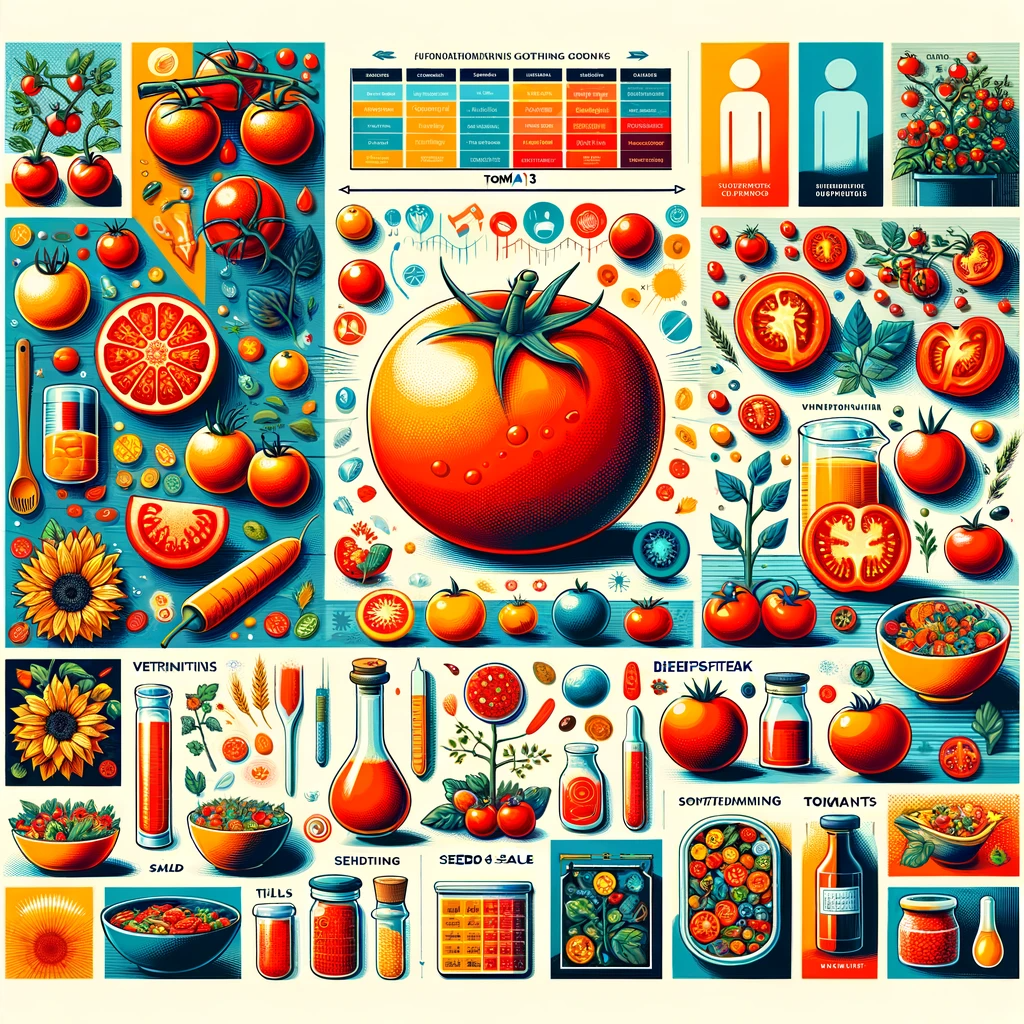Tomatoes are a staple in kitchens around the world, loved for their vibrant colors and versatile uses in a wide range of dishes. But have you ever wondered what gives tomatoes their beautiful red hue? It’s not just about aesthetics; the colors of tomatoes are a result of fascinating biochemical processes involving various pigments. In this article, we will delve deep into the science behind tomato colors, unpacking the pigments that make tomatoes not only visually appealing but also incredibly nutritious.
The Power of Pigments
Before we dive into the specifics of tomato pigments, it’s essential to understand the role of pigments in plants. Pigments are natural compounds responsible for the coloration of various plant parts, such as fruits and flowers. They play crucial roles in a plant’s life cycle, from attracting pollinators to protecting against environmental stressors.
The Primary Tomato Pigment: Lycopene
When you think of a ripe, red tomato, you’re likely envisioning the vibrant red pigment known as lycopene. Lycopene is the most abundant pigment in tomatoes and is responsible for their classic red color. It’s also a powerful antioxidant that offers numerous health benefits, including reducing the risk of chronic diseases and promoting heart health.
Beta-Carotene: The Orange Hue
While lycopene is the dominant pigment in red tomatoes, orange and yellow tomatoes contain beta-carotene, which is also found in carrots and sweet potatoes. Beta-carotene gives these tomatoes their characteristic color and is a precursor to vitamin A, making it essential for maintaining healthy vision and immune function.
Anthocyanins: The Color Changers
In some tomato varieties, you may encounter hues of purple or even black. These colors are attributed to anthocyanins, a group of pigments with potent antioxidant properties. Anthocyanin-rich tomatoes not only add diversity to your plate but also offer unique health benefits.
The Role of Genetics
The color of a tomato is largely determined by its genetic makeup. Tomato plants carry specific genes that regulate the production of pigments like lycopene, beta-carotene, and anthocyanins. Variations in these genes lead to different tomato colors, shapes, and sizes.
The Ripening Process
Tomatoes change color as they ripen, transitioning from green to their final hue. This transformation is driven by the breakdown of chlorophyll, the green pigment responsible for photosynthesis, and the activation of various pigment-producing genes.
Environmental Factors
Aside from genetics, environmental factors also influence tomato coloration. Factors like temperature, sunlight exposure, and soil composition can affect the production and accumulation of pigments in tomatoes. This is why tomatoes grown in different regions may exhibit variations in color and flavor.
Cultivating Vibrant Tomatoes
For those who enjoy gardening or want to maximize the color potential of their tomatoes, there are several tips to keep in mind:
1. Choose the Right Variety
Select tomato varieties known for their vibrant colors, such as ‘Brandywine’ for its rich red hue or ‘Indigo Rose’ for its striking purple-black color.
2. Provide Adequate Sunlight
Tomatoes require plenty of sunlight to produce pigments effectively. Ensure your tomato plants receive at least 6-8 hours of direct sunlight daily.
3. Optimal Soil Conditions
Maintain well-draining soil with proper nutrient levels. Tomatoes thrive when the soil pH is around 6.5 and essential nutrients are readily available.
4. Monitor Temperature
Keep an eye on temperature fluctuations, as extreme heat or cold can impact pigment production. Mulching can help regulate soil temperature.
Conclusion
The science of tomato colors is a captivating journey into the world of pigments, genetics, and environmental influences. Understanding these factors can not only enhance your appreciation for tomatoes but also help you cultivate the most vibrant and nutritious tomatoes in your garden. So, the next time you savor a juicy, red tomato, remember the intricate science that goes into creating its stunning color and healthful properties. Happy gardening and bon appétit!
